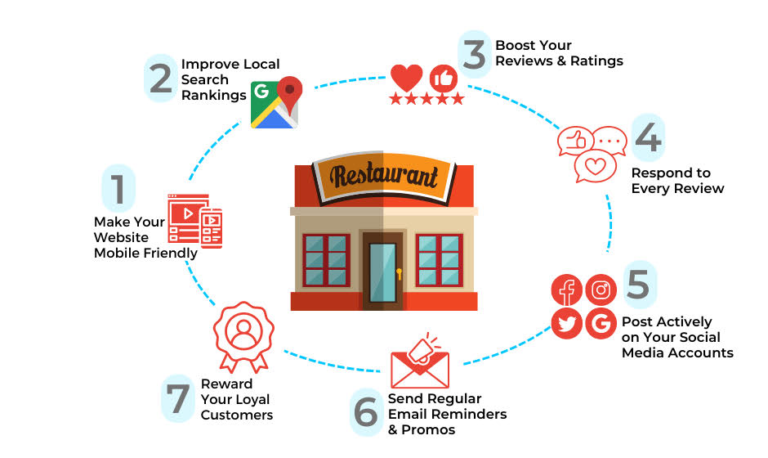The Impact of Emerging Technologies on Businesses
The business landscape is constantly changing, and businesses that do not know this or make the necessary adjustments are likely to be left behind and become uncompetitive in a world that is becoming more so. Technology has become an integral part of this change and is impacting businesses at different stages in different ways.
Enhancing Customer Experiences
Businesses cannot operate without customers. They know others are fighting for the same customers, so they must provide the best experience or risk losing them. Fortunately, providing the best experience has become much easier with the rise of technologies like artificial intelligence and machine learning.
Businesses can now know much more about a customer and put together profiles much faster than they could in the past. Using data points like a person’s age, preferences, and past purchases, businesses can provide personalized customer service that enhances customer experiences.
Personalization, especially in customer communications, has become a significant differentiator for businesses. Those that address their customers by name, send them relevant emails and messaging, or reach out with customer offers do much better than those that do not.
Remember that today’s customers want to feel special and seen as individuals by businesses, so they appreciate and associate more with those that make them feel this way.
Lastly, businesses can also tend to customer needs much faster, sometimes providing answers, solutions, and recommendations before a customer asks or seeks that information.
Requiring Businesses to Think About New Forms of Investment
In the past, businesses tended to invest in other businesses, property, stocks and other forms of what are known as traditional investments. In today’s landscape dominated by technology, they must rethink how they invest and what they invest into.
It’s no longer about buildings and equipment, but about investing in employees and what they need to leverage the available technology.
Employees who do not already have the skills should be trained on how best to use emerging technology and how to make the most of it. While businesses can expect employees to learn on their own time and pay for the courses and certifications they need, that can be an unfair ask.
Businesses that realize the value of such training and the new skills employees end up with are happy to pay for them to undergo additional training. They know they can get a lot more value from each employee if they can take advantage of the latest technology, and that is worth the investment.
Next, businesses have to invest in computers, servers and networking. Technological options like cloud-based software require it, and businesses that know its value are happy to invest in it.
Technology Is Making Collaboration and Remote Work Possible
While there is a continuing push by businesses for people to return to work, there are still a lot of people working from home or remote locations. According to The Home Office Life, a company that researches remote work, more than 74% of respondents in a recent survey said they have worked remotely over the past year. Over 40% of respondents said they would not return to the office.
This is a significant number of workers who have to work alongside colleagues regardless of where they are located. Technology has enabled them to do this, with options like collaboration software, and video or audio messaging platforms further enhancing connections between employees.
Emerging technologies like optical character recognition are also making digitizing documents much easier for sharing and collaboration among employees. This technology is also powering options like PDF to Word conversions so employees can work with editable file formats that make their work much easier. To see this technology in action, try uploading the file here to convert it in a few seconds. This technology works on any platform, which makes it accessible to anyone who wants to use it.
Enhancing Communication with Clients
Clients now have more ways to contact the right people at businesses they want to work with. They still have traditional options like email and calls but can use modern options like VoIP and online messaging platforms that enhance their experiences.
Also, employees and stakeholders are more accessible. Clients can reach them through text for urgent messages or email them with what they want to talk about. In the same way, employees can reach clients much easier with marketing or promotional messages. This can be cold or warm contact, but the aim remains the same; to get them to work with the business.
Observe Competition to Learn from Them
Businesses that do not know what their competition is doing put themselves in danger of being left behind. There is a huge selection of tools and software that help businesses observe their competition to learn from and beat them.
For example, businesses can use various tools to see what their competition is talking about on social media. They can also use the same technology to learn about new trends, products or services to take advantage of them before competitors do.
Lastly, they can observe other businesses to see the mistakes they have made so they can avoid making them. A great example is marketing where a competitor runs a campaign that does not do well. Seeing the results, a business can avoid running a similar campaign or learn what went wrong, tweak it, and run theirs with a better outcome.
Reducing Storage and Computational Costs
As businesses lean more on technology, their computational and storage costs increase as they demand more of them. Gone are the days of installing server hardware on-premises because cloud computing has done away with that.
Most businesses can benefit from cloud computing for their computational and storage needs. And the best thing about this option is that businesses can scale up and down as their needs dictate.
Want to store more video files for a marketing campaign? Ask the cloud provider to provide more server space. Want a faster server because you have a sale coming up and think your website might slow down? Ask them to make the necessary adjustments so you have the resources you need to handle such a surge.
Robotics and Automation Changing How Businesses Work
Robotics and some level of automation have been around for a long time, especially in manufacturing. However, technological improvements have made them even better for a variety of tasks. They are at the forefront of improving efficiency, reducing costs and boosting productivity. They do this by assisting with tedious and repetitive tasks, which frees employees and business leaders to focus their time and energy on more productive tasks, strategic planning, and enhancing customer support.
These benefits also extend to helping businesses develop new products and services. Combining them with cloud computing and the Internet of Things allows applications such as the development of smart factories, which manufacture higher quality products faster. Smart factories optimize production through increased automation and real-time monitoring. This leads to faster and more flexible manufacturing, better quality control, and shorter times from product design to launch. In essence, smart technology allows companies to accelerate innovation cycles and quickly bring enhanced products to market.
Overall, the benefits of robotics and automation are huge, and they will continue to be more so as these technologies improve.
With numerous technological advancements in recent years, businesses have tools and options that help simplify or improve their work. These technologies help with different business processes to streamline them and leave enough time for leaders to focus on other aspects of running a business and providing the best products and services to customers.




